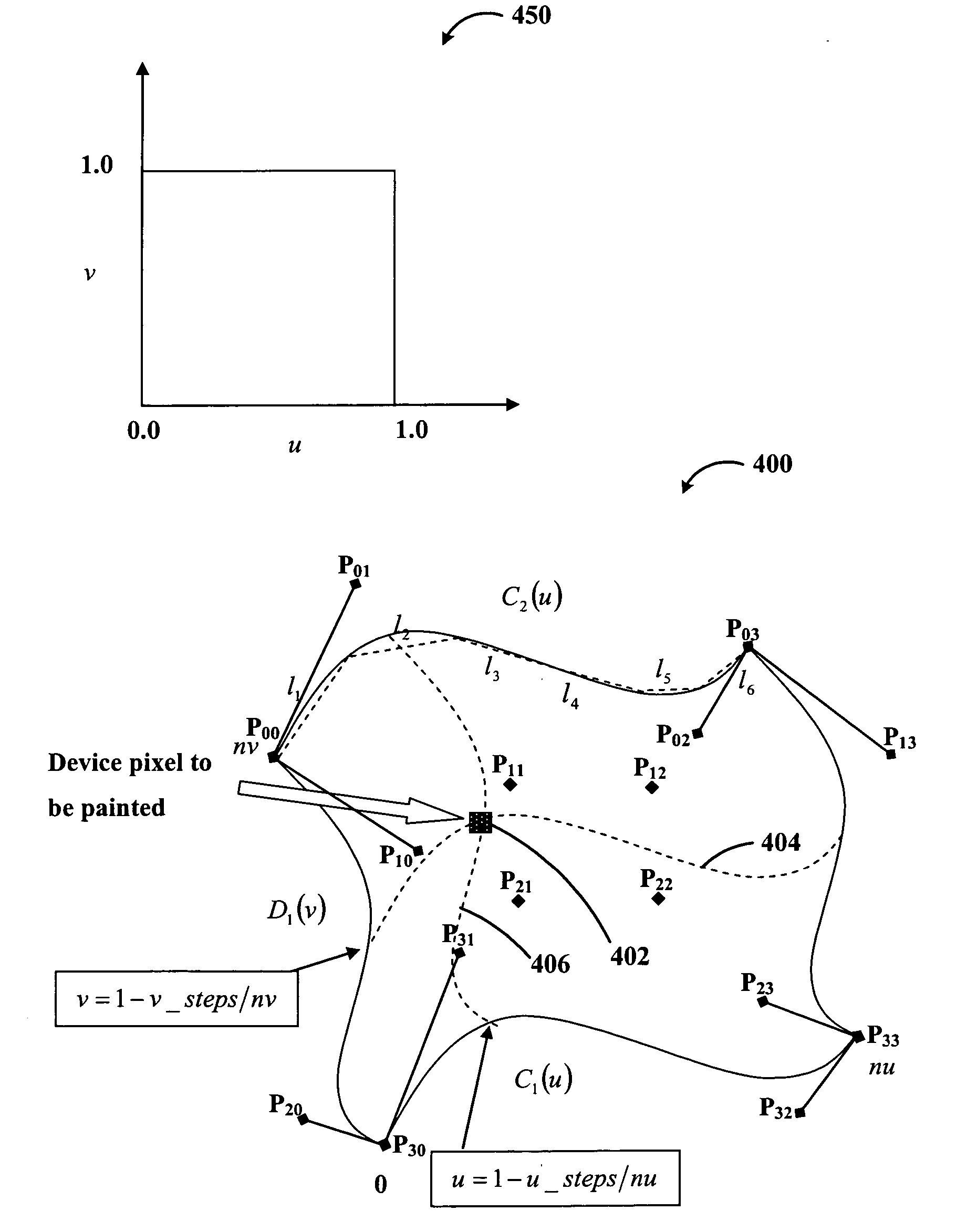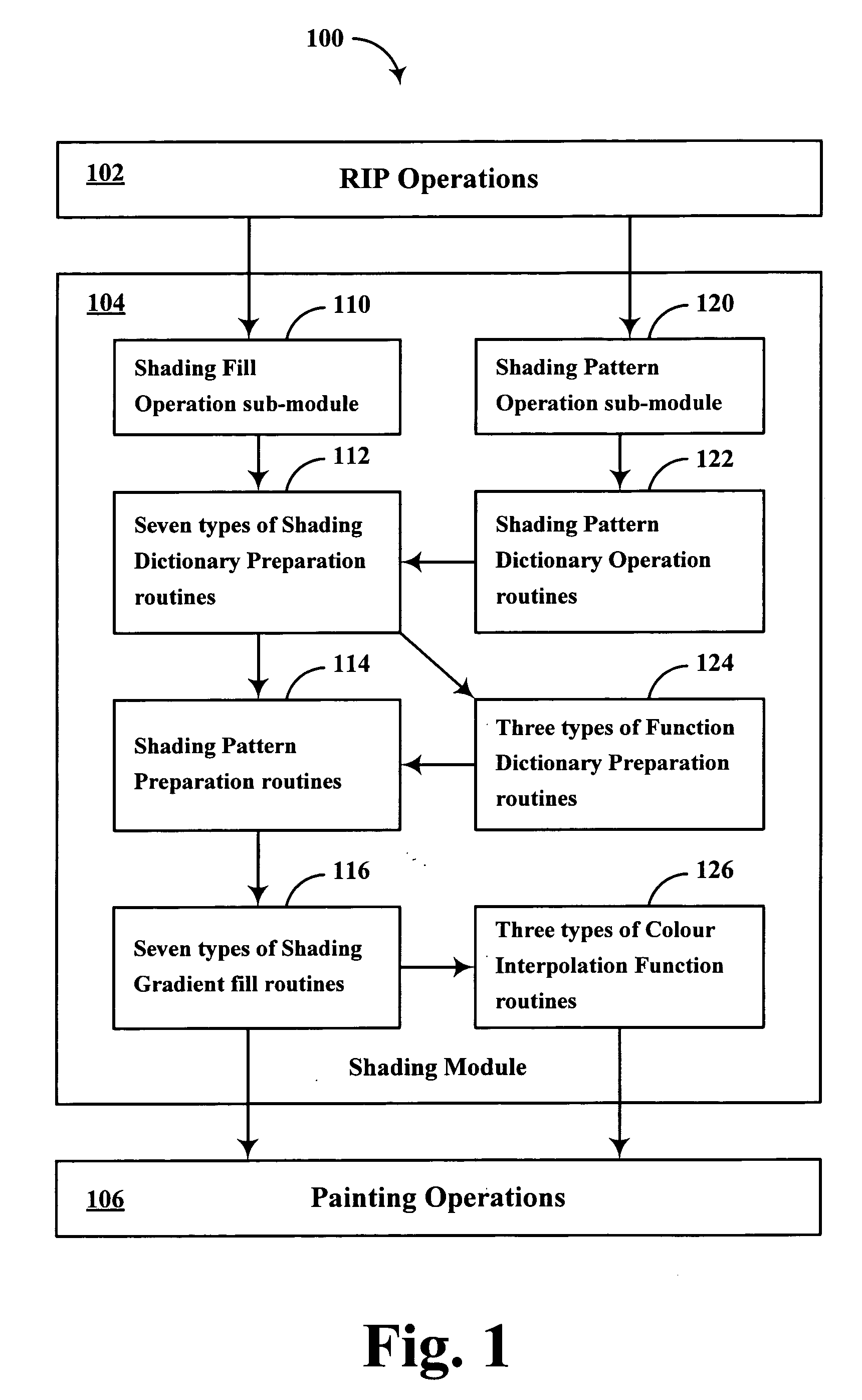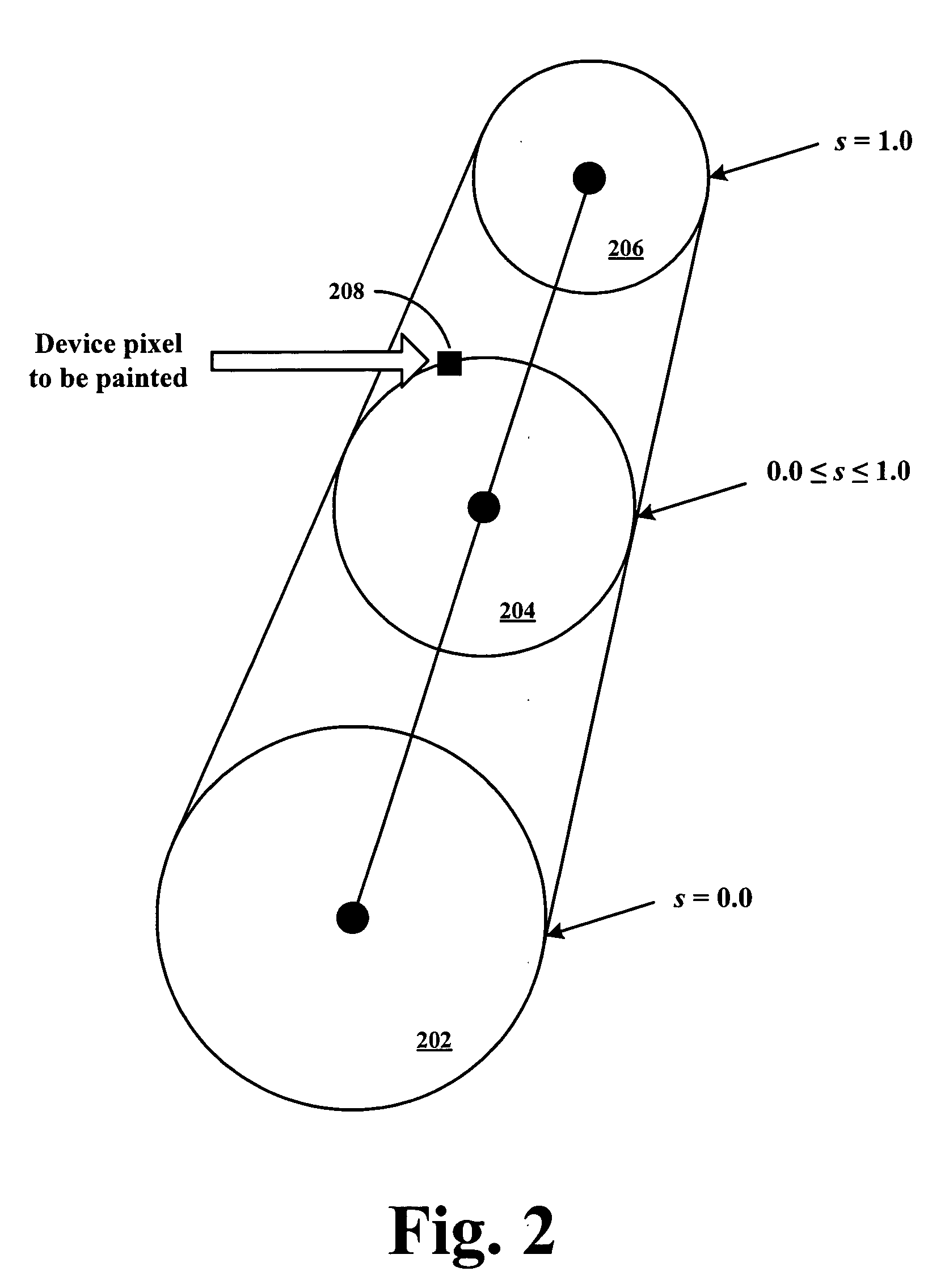Method and apparatus for rapid shading in a raster image processor
a raster image processor and processing method technology, applied in the field of raster graphics systems, can solve the problems of inability to transform the device coordinates to shading coordinates, and inability to accurately determine the colour at the device pixel, etc., to achieve the effect of correct and fast shading colour computation
- Summary
- Abstract
- Description
- Claims
- Application Information
AI Technical Summary
Benefits of technology
Problems solved by technology
Method used
Image
Examples
Embodiment Construction
[0032] Referring to FIG. 1, in a raster graphics output device such as a printer or a display, the rasterisation of input visual information is performed via a raster image processor 102 contained within a control unit 100 of the device. Shading operations required for rasterisation of input data is usually performed within a shading module 104. Such a module contains predominantly two sub-modules, one for performing shading operation on areas bounded by simple geometric shapes and another for accomplishing shading pattern rendering operations on coverage areas with complicated geometrical boundaries. When painting a defined area with a shading pattern, a pattern dictionary is normally used, that describes the pattern type, unique identification number for identifying the particular pattern, Implementation key for specifying any implementation-dependent entries that are associated with the pattern and a shading definition, i.e., a shading dictionary. There are seven types of shading...
PUM
 Login to View More
Login to View More Abstract
Description
Claims
Application Information
 Login to View More
Login to View More - R&D
- Intellectual Property
- Life Sciences
- Materials
- Tech Scout
- Unparalleled Data Quality
- Higher Quality Content
- 60% Fewer Hallucinations
Browse by: Latest US Patents, China's latest patents, Technical Efficacy Thesaurus, Application Domain, Technology Topic, Popular Technical Reports.
© 2025 PatSnap. All rights reserved.Legal|Privacy policy|Modern Slavery Act Transparency Statement|Sitemap|About US| Contact US: help@patsnap.com



